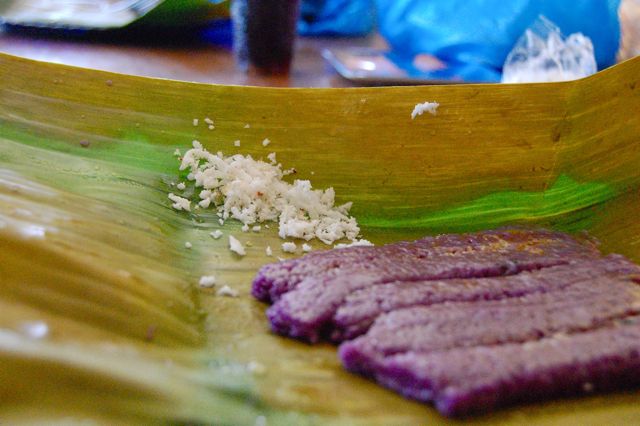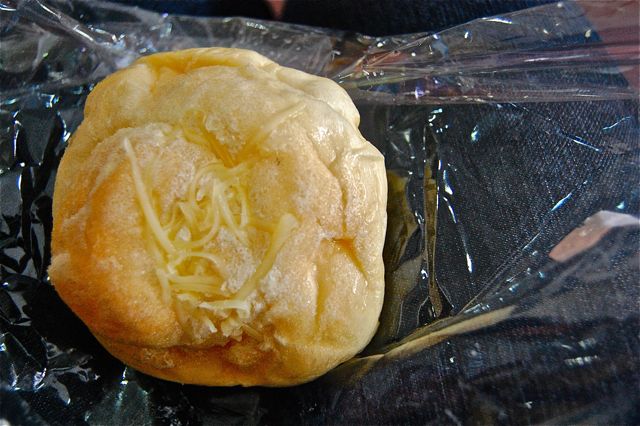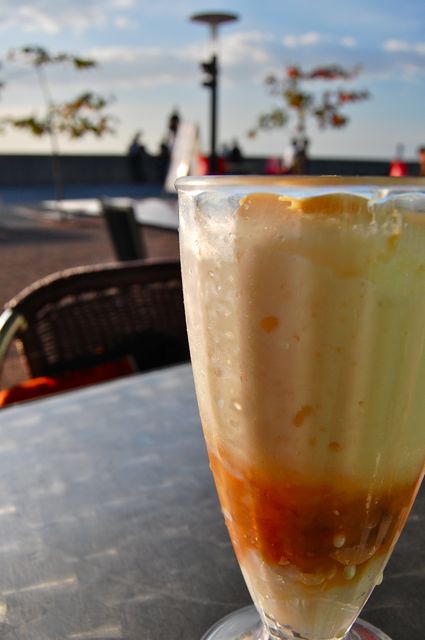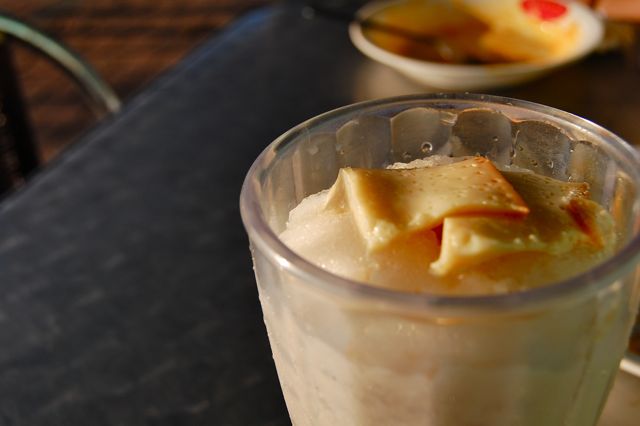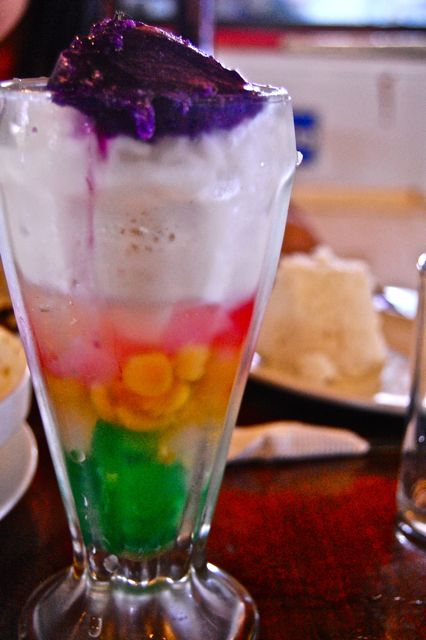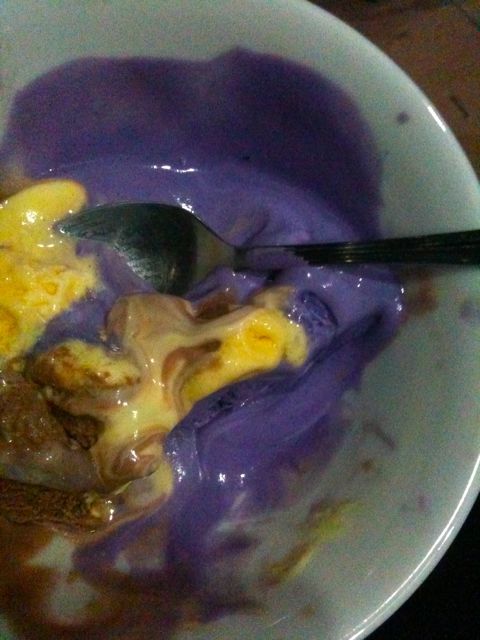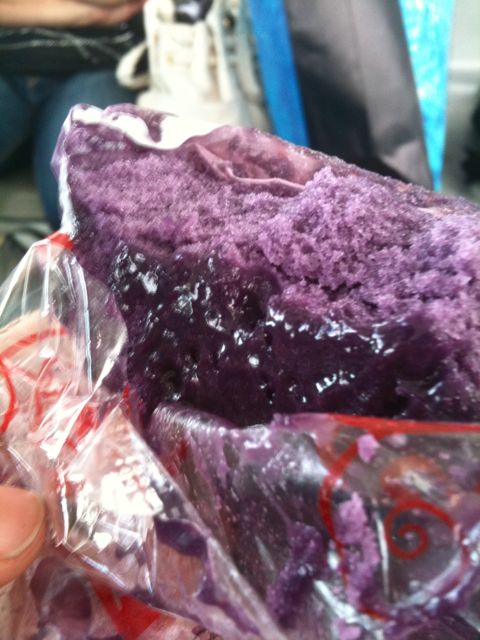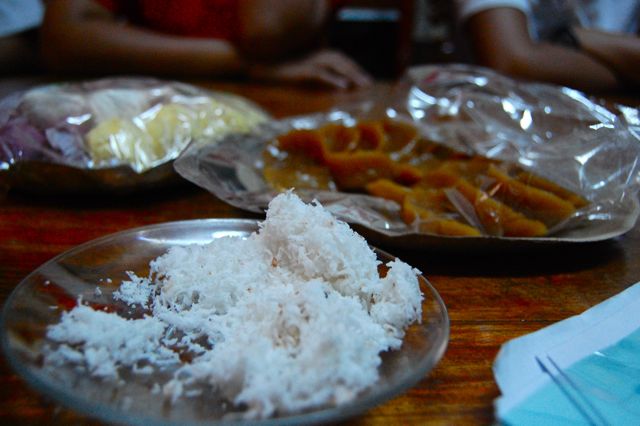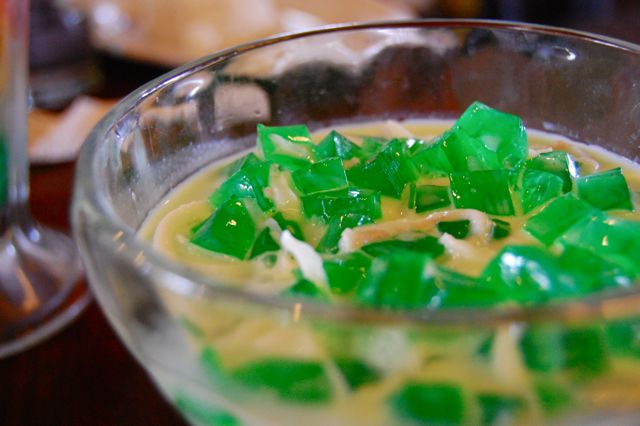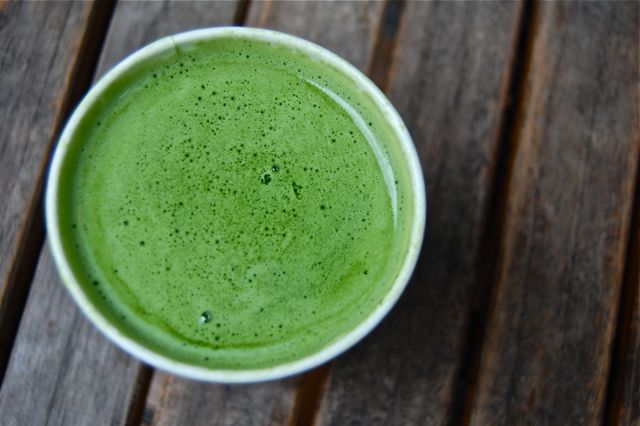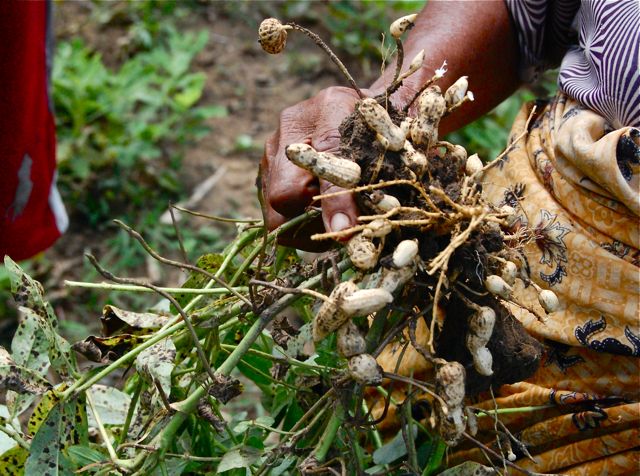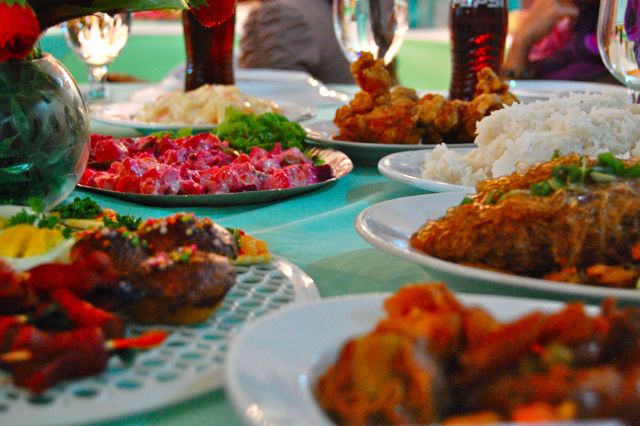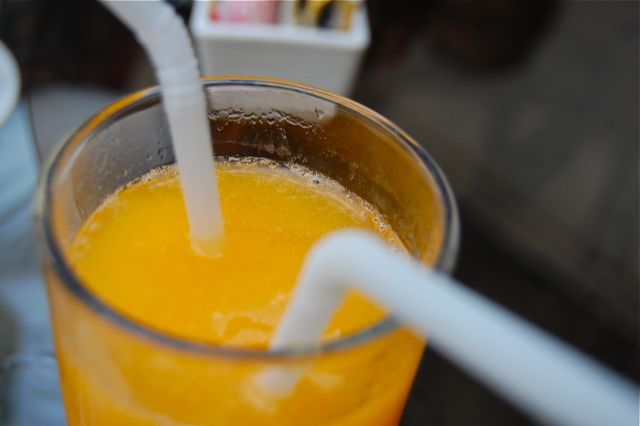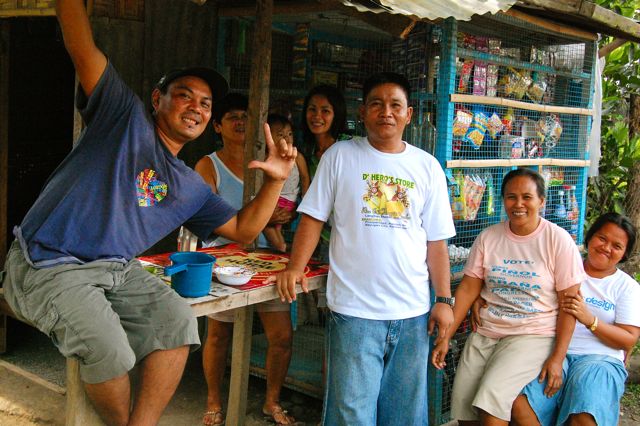I have covered the dishes that make me drool whenever I think about them, I have covered the snacks that make me drool whenever I think about them… But I have left material to end this short series with glory.
Like the glory with which they closed every meal.
We’re talking about desserts, people. Sugar. That chemical that is going to end up killing me at age 30.
Before I need to go grab one of my cherished polvorones to nibble on (and decrease my life expectancy with), I must share the true talent of Pinoys with you. Most of the world will say it is singing (the country is full of melodious and well-trained voices indeed; karaoke is the national sport)… I say it is sweet-making.
Let us begin with the first bite that let me know I was witnessing something special in the land of sugar: Ms Ensaymada, a pastry that seems to be part of the Spanish heritage in the Philippines. I had this ensaymada during a media event that took place in a bakery (I’m so copying that idea one day).
I’d say the texture was brioche-like, very buttery and only slightly sweet. What made it stand out, though, was the fact that it was sprinkled with sugar and… no, it’s not shredded coconut. It’s cheese!
It was the perfect beginning for a trip throughout which I gained a few kilograms.
Later that day, I met my friends Jason and Jecel to do a quick tour of the Mall of Asia. Knowing I’m food obsessed, they took me to Razon’s, a spot that’s become famous for its original take on halo-halo. That’s the same place where we also had pancit luglug as a snack before dinner.
Did I tell you I love the Pinoy style for eating?
Halo-halo (mix-mix if I may be allowed to make a quick, unverified translation here) is a Pinoy dessert that involves shaved ice and sweet toppings. If I recall correctly, each halo-halo features 9 toppings that range from preserved fruits to chickpeas. The one pictured above was a specialty halo-halo (and also my favorite one, I must admit); it didn’t involve nine toppings.
It did involve, though, very ripe (possibly cooked) banana; coconut gelatin (of which I made sure to score a jar before I left the Philippines, oh yes); flan, as you can clearly see… and, just as importantly, layers of shaved ice perfectly mixed with milk.
The spot this baby was digested in was beautiful, but there are just no words to describe the paradise I could witness when I took the first spoonful.
Vive le halo-halo du Razon’s.
Here is a more traditional version of halo-halo. This one did involve chickpeas, plenty of preserved fruits I couldn’t identify, and an interesting addition on the top…
This is ube puree. If the expression ‘purple yam’ brings you images of roasted carbs served on the side with Caribbean dishes, you may be surprised (as I was) to learn that ube is a popular component of desserts in the Philippines.
That purple thing in the dish was my first encounter with sweet ube. Mass-produced Napolitan ice cream tubs don’t feature strawberry, but ube ice cream. I found no reason to complain!
But then this desperate phone photo shows the highlight of my ube experience. Hungry while sitting in an airport, I approached the pastries counter and asked for what I thought looked the most exotic: an ube mamon. I’ll spare you the hyperbolic-sounding (but honest-to-heart) details of the reaction I had. Let’s just say that ube puree is used to an extent that it will make the pastry flavorful, but not gritty; that its moistness stands in the just balance not to interfere with any glorious fluffiness.
Gotcha! You thought that was ube-related too, huh?
Truth is, as it was confessed by the outstanding PRCY volunteer from Rizal that shared this with me, that this puto bumbong involves no ube. It’s just food coloring!
He said this treat is usually eaten during the Christmas celebrations. Rice paste will be placed into bamboo canons and then steamed. The glutinous product, that has no sweet flavor of its own, is then eaten with generous sprinklings of sugar and dried coconut flakes.
Here is another example of goodies eaten with the addition of dried coconut. This one reached the embracing safety of my belly thanks to Bai Fatima. The brown things were a gelatinous candy; I can’t remember what it was made of. They were somewhat sweet, but became a lot sweeter after being rolled in the coconut dish.
But let’s talk Coconut. As a city girl, coconut is a luxury for me; it used to remind me of happy days spent in the beach with family as a kid. I must have eaten fresh coconut, um, about five times before I went to the Philippines – always on it’s own.
This dessert, buko pandan, came to completely hijack whatever sentimental value I had for coconut. Whenever I hear ‘coco-‘, that’s it. My mind will forever go back to this ordinary-looking cup.
It basically features sweetened evaporated milk, gelatin made out of pandan leaves, and shaved (fresh) coconut. This simple combination of very basic ingredients tasted like nothing I had ever eaten before. Sweet, comforting… and refreshing.
Last, but not least, is the crowning of the sweet moments spent in the Philippines (and my formal coverage of the drinks topic). After one of the most inspiring events I’ve ever been in with youth activists, we stopped on our way back at a small cluster of stands. Some sold candy and small convenience goods. One of them, run by a young woman, featured a very large pitcher of cold buko palamig – a drink made out of milk, sugar and fresh coconut.
As a member of the Don’t Drink Your Calories team, I happily admit that buko palamig is the one drink I’d spend my entire daily allowance on if I were better at swimming.
Having lived in a developing country for my entire life, I know what it is like to live in a society that aspires to a level of development as it’s seen in Scandinavia, but that at the same time appreciates the interpersonal relations that make it cheerful.
Let’s face it: the place I live in is a mess. But it’s a mess where, in a good day, people have tons to smile about.
It’s a colorful mess. There is eyecandy everywhere you look. Aesthetics has triumphed: there is beauty in what we wear, what we touch, what we eat. And I think this is something I could appreciate in the Philippines, too – not just by meeting the wonderful people I met, but by eating my way through the country.
So here’s my final verdict: the Philippines is a wonderful country to explore for many reasons, and especially for all its culinary opportunities. Flavors, textures and combinations you’ve probably never even thought of; comforting dishes, no matter where you’re from; freshness in every bite.
But the most important, I think, is that every bite you’ll have in that country –sharing your food, buying it from street stands run by families, indulging in the love for the heritage of every tradition that’s touched Filipinos– will remind you of the things that matter.
And that, I think, one doesn’t need to be a food critic to realize.
